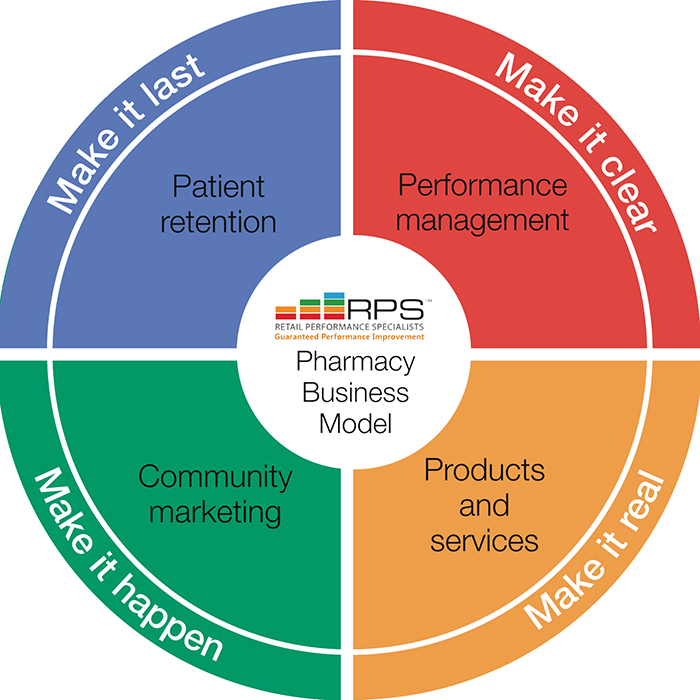Ways to revive retail sales
In Running Your Business
Follow this topic
Bookmark
Record learning outcomes
This is the second in a new key series of articles in P3 to help pharmacies to positively drive product sales and improve your revenue prospects. This time we look at the potential to grow OTC sales. What are the steps to start thinking about?

With likely cuts to NHS income, it's certainly worth taking another look at improving other revenue streams in pharmacy. For example, OTC and retail sales is a revenue area that, with the right skills, you can influence, and your retail space is so visible to customers that, from their perspective, it's a major part of your offering.
But there is no doubt it is a tough market across the board. It's been a turbulent few years for grocery retail experts such as Tesco, for example, bearing the brunt while the other big chains are also suffering at the hands of discounters such as Lidl and Aldi. Just look at the results for national supermarket chain Morrisons, which reported a 35 per cent drop in half-yearly pre-tax profits. Even major chains, with the best retail expertise in the country, are struggling.
What does this mean for pharmacies? It gives us an insight into the fact that, while national retail giants can dominate when they get it right, they can also get things wrong by not responding quickly enough to trends in the marketplace and, in particular, by ignoring changing customer needs. But advice is at hand.
Know your customer, says retail expert Dennis Reid, chairman of Retail Performance Specialists. €Successful multiple and independent retailers have a consistent customer value proposition (CVP) that is applied across all their stores,€ he says. €This system delivers their customer promise, which is achieved through consistent performance, offer and customer experience.€
Top tips for pharmacy retail success
- Determine if you are a traditional prescription pharmacy or a convenient community pharmacy health service. There is a huge difference, and the first one is under threat
- Write a business strategy and validate it against other successful companies
- Develop your unique customer value proposition and research how to source the products and services to deliver it
- Talk to your customers and tweak your plan and CVP from their feedback. Don't forget that they don't know what they don't know
- Change your customer service offer and store to deliver the plan. Formalise the process and empower your staff to deliver against the system. Measure the numbers and track the response.
Pharmacy strategy
 For most pharmacies, retail sales only represent up to 10 per cent of turnover, so boosting sales would be welcome, especially as the remaining 90 per cent of the business is reliant on NHS income, which is facing its own financial pressures €“ growth is unlikely despite an increasing workload, so it makes sense to focus on parts of the business where growth is still possible.
For most pharmacies, retail sales only represent up to 10 per cent of turnover, so boosting sales would be welcome, especially as the remaining 90 per cent of the business is reliant on NHS income, which is facing its own financial pressures €“ growth is unlikely despite an increasing workload, so it makes sense to focus on parts of the business where growth is still possible.
Mr Reid believes pharmacies can compete with other high street and national retailers. €Retail is rapidly changing for everyone,€ he says. €Competing to your strengths is key. Many try to compete with the strengths of the large retailers €“ price and range €“ but you have to compete on your terms: a community pharmacist who understand community needs.€
Although pharmacies have a huge amount to consider regarding their businesses in 2016, there are opportunities to grow the retail side of independent pharmacy that should be seriously considered.
€The biggest opportunity is to follow the customers' money by conveniently offering products and services that are natural extensions of the trusted core offering: prescriptions and OTC. This spend is currently going to convenience retailers, supermarkets and specialists and it can be secured by community pharmacists,€ says Mr Reid.
Encouraging existing customers to spend more in community pharmacy and attracting new customers is easier said than done. Mr Reid believes that pharmacies need to offer as many different reasons as possible for customers to visit the store, so that it becomes their destination for illness and wellness needs, for example.
€The world's number one pharmacy group, Walgreens [Boots in the UK], is following the money on this trend to be the cornerstone of 'health and happiness'. It is adding related shopper missions to its core missions of pharmacy and health and beauty. It is certainly not conventional, boring or the same as before.€ While Mr Reid admits this isn't the right approach for everyone, the €direction of travel is correct€.
Rise to the challenge and reinvent pharmacy for today's consumers
Product focus
It's vital that pharmacies get their extended product offering right.
€A range of traditional products and services alongside compatible products and services, such as wellness products, health and beauty and personal care and trusted advice, offered and sold in a way that is 'convenient for me,'€ says Mr Reid. Pharmacies must ensure this is combined with a local, personal service that is accessible, discreet, friendly and professional, to make it distinct from supermarkets.
The greatest frustration for consumers today, he says, is not being able to access advice when it's needed, because the overall trend is the culture of €now€.
€We as consumers and shoppers increasingly expect everything immediately,€ he says. €Within this there is a new consumer take on familiar ideas. One highly relevant trend is the move from treatment to prevention, to wellness. We want to look after ourselves, and this is the biggest growth opportunity.€
Engage and change perceptions
Mr Reid recommends looking at where customers are currently fulfilling their health and wellness and personal care needs €“ convenience, supermarkets and specialists. He suggests pharmacies need to focus on customer service, the product offer and store design to give customers multiple reasons to visit and less need to visit other stores.
€Be a convenient community pharmacy,€ he says. €Talk to customers, and ask them what they need and want from you.€
As well as increasing the retail offering, community pharmacies must challenge any perceptions that they are more expensive than other retailers. Mr Reid believes pharmacies could offer a wider selection of customer solutions.
€Price is managed as part of an overall category and total store strategy. Customers are looking for one-stop, convenient retailers and will pay a higher price €“ not an insulting price €“ for that convenience value. €Talk to them. Price is seldom the issue, but value is. Build the value of your pharmacy service.€
The future
There is no escaping that the retail landscape, as well as that of healthcare, has changed for ever. If we choose more of the same, the retail business will only shrink as we fail to meet shoppers' needs. Community pharmacy can rise to the challenge and reinvent itself for today's consumers.
€Know your customers,€ says Mr Reid. €Talk to them, give great advice and more reasons to buy from you through introducing, recommending and comparing.€
Going for growth? Ask an expert
Dennis Reid of Retail Performance Specialists is a retail specialist who helps companies increase sales, performance and profitability. He has more than 35 years' experience and has worked with major companies including Nike, Gucci, Nokia and Marks & Spencer.
He now works with community pharmacies to deliver his Pharmacy Growth Programme, and is so confident in his expertise that he is guaranteeing a 10-fold return on investment over 18 months or your fee returned. ô€€€
To explore how the Pharmacy Growth Programme could benefit your business, call 01344 849397, or email andrew@rps-global.com
